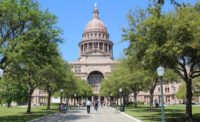In September 2006, California was the first state to pass a lead-free plumbing law. In 2008, the State of Vermont passed a similar no-lead law intended to specifically control the amount of lead in plumbing fixtures and other devices that deliver potable water for drinking or cooking. Several other states are currently considering similar legislation.
The California Health and Safety Code #116875, better known as Assembly Bill 1953 (AB1953) defines “lead free” to mean the maximum allowable lead content as:
- 0.2% lead in solder
and flux
- 0.25% lead in wetted surfaces of pipe, fittings and fixtures as determined by weighted average
In meeting AB1953, manufacturers must develop products made of material containing less than .25% of lead, without a sealant or coating, and obtain independent third party certification. If manufacturers choose to continue to make higher lead content products and also make products that meet California and Vermont requirements, they will need to maintain two SKUs for the same product. Taking the lead out impacts the manufacturer - the cost of raw goods increases and machinery has to run at slower speeds, thus creating a lower yield rate. There is also some impact on scrap value because low-lead and leaded alloys cannot be mixed during the scrap process.
What is in and what is out?
There has been and continues to be significant confusion over the specific requirements of AB1953. Here is an overview of the requirements:a. Water distribution valves of any size excluding 2” and larger gate valves
b. Fixtures for sinks other than service sinks
c. Fittings, tees and splitters
d. Solenoid valves for household use other than irrigation
e. Water meters
f. Submersible pumps used in the conveyance of potable water
g. Drinking water fountains
h. Fixtures delivering potable water to cooking applications, ice making and coffee making
i. Water heater fixtures including isolation valves unless the water heater is intended for industrial use
j. Mixing and anti-scald valves
Future directions
There has been speculation that the State of California will rescind or modify the requirements of AB1953. Most people that are close to this issue do not see any way this will happen. If anything, there maybe additional items inserted into the requirements of AB1953.It is apparent that other states are working on low-lead legislation, although this process is expected to move slowly. With the NSF61-G specification now in publication, it allows states to follow the requirements of AB1953 and require that suppliers market products meeting NSF61-G.


